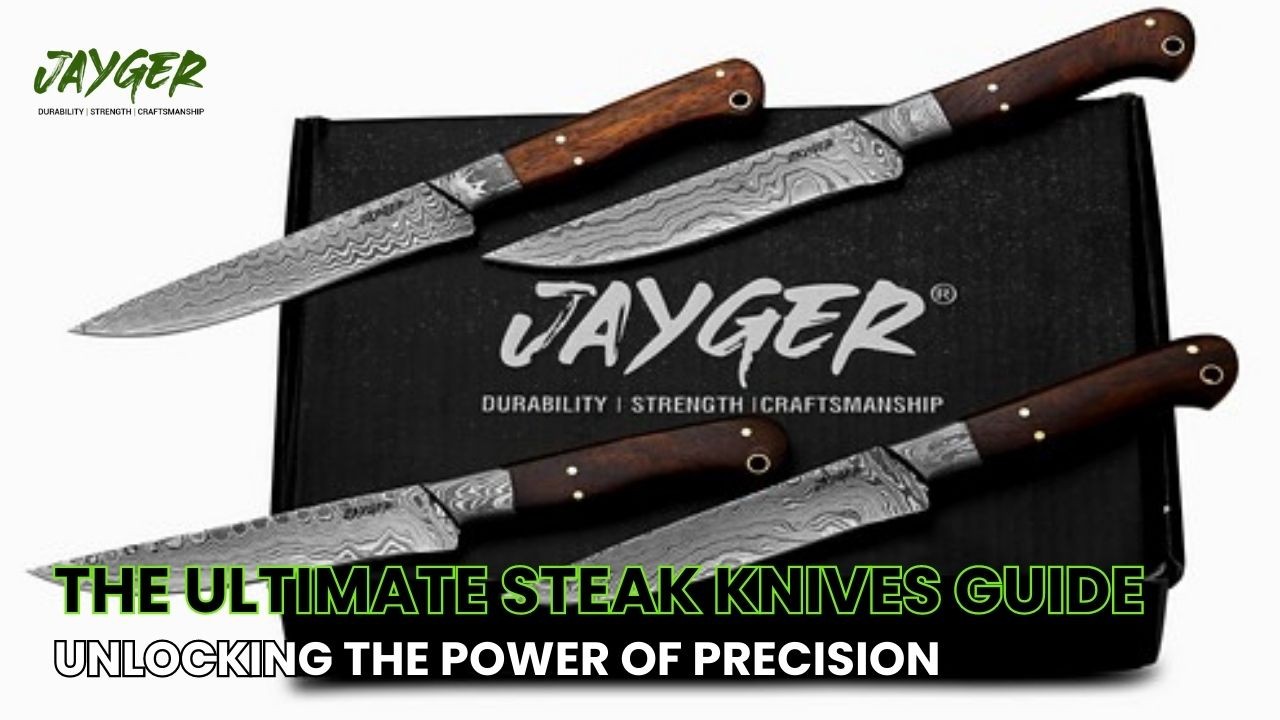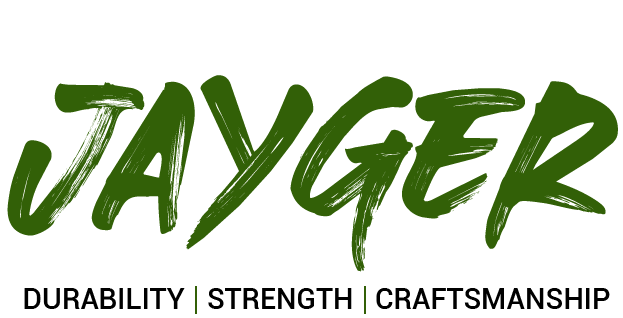Unlocking the Power of Precision: The Ultimate Steak Knives Guide

Are you tired of struggling with dull knives that make it difficult to slice through a perfectly cooked steak? Look no further! buy a knife, we will unlock the power of precision and help you choose the perfect steakmesser set for your dining experience. From discussing the importance of blade material and construction to exploring the different types of steak knives available, we leave no stone unturned in our quest to enhance your culinary adventures. Whether you’re a seasoned chef or a home cook looking to elevate your steak game, our comprehensive guide will provide you with all the information you need to make an informed decision. Say goodbye to tough cuts and hello to effortless slicing as we delve into the world of top-notch steakmesser set that combine functionality, durability, and style.
Get ready to unleash the full potential of your steak dinners and embark on a journey toward culinary excellence!
The Importance of Precision in Steak Knives
When it comes to enjoying a perfectly cooked steak, precision is vital. A sharp and well-crafted steak knife can make all the difference between a satisfying dining experience and a frustrating one. The right steak knife allows you to effortlessly slice through the meat, ensuring each bite is tender and flavorful.
One of the critical factors that contribute to precision is the blade material. High-quality steak knives are often made from stainless steel or high-carbon steel. Stainless steel blades are known for their resistance to corrosion and ease of maintenance. On the other hand, high-carbon steel blades offer superior sharpness and edge retention. The choice between the two depends on your personal preference and maintenance routine.
Another critical aspect of precision is the construction of the knife. A full-tang design, where the blade extends through the handle, provides better balance and durability. This design ensures that the knife remains stable in your hand, allowing for precise cuts without any wobbling.
Lastly, the serration of the blade plays a crucial role in precision. While some prefer straight-edge blades for a clean and precise cut, others opt for serrated blades that effortlessly glide through the meat, ensuring minimal tearing. The choice between a straight edge and a serrated knife ultimately depended on your preference and desired cutting style.
Different Types of Steak Knives
Steak knives come in various shapes and sizes, each designed to cater to different preferences and dining experiences. Let’s explore some of the most common types of steak knives available:
Traditional Steak Knives: These are the classic steak knives that most people are familiar with. They typically have a straight edge blade with a pointed tip, allowing for precise cuts. Traditional steak knives often feature a wooden or synthetic handle for a comfortable grip.
Serrated Steak Knives: Serrated steak knives have a blade with small, jagged teeth that help to cut through the meat more easily. The serrations grip the meat, preventing it from tearing and ensuring a smooth slice. Serrated steak knives are handy for tougher cuts of meat.
Steakmesser Set: Steak knife sets usually have a matching set of four to eight knives, making them perfect for entertaining guests or larger families. These sets often include a storage block or a presentation box, adding a touch of elegance to your dining table.
Steak Knife and Fork Sets: If you prefer a more traditional dining experience, steak knives, and fork sets are great options. These sets typically include a steak knife and a matching fork, allowing you to cut and enjoy your steak effortlessly.
Mini Cleaver Steak Knife: The mini cleaver steak knife is a versatile and compact tool designed for effortless meat cutting. With its sharp and sturdy blade, it excels in slicing through juicy steaks, chops, and poultry. Its compact size ensures precision and control, making it a must-have for any steak lover’s culinary arsenal.
Why Do People Use Steak Knives?
Steakmesser has become essential for anyone who enjoys a good steak. But why do people use steak knives specifically instead of regular table knives? The answer lies in their design and functionality.
Steak knives are designed to handle the unique challenges of cutting through the steak. The sharp blades and pointed tips allow for precise cuts, ensuring each slice is tender and juicy. The serrations on some steak knives provide additional assistance when dealing with tougher cuts of meat, preventing tearing and ensuring a clean cut.
Unlike regular table knives, steak knives are built to withstand the rigors of cutting through thick pieces of meat. They are often made from high-quality materials that offer superior sharpness and durability. Using a steak knife enhances the overall dining experience, allowing you to enjoy your steak to the fullest.
Do Chefs Use Serrated Steak Knives?
The choice between serrated and straight-edge steak knives can be a matter of personal preference for chefs. Some chefs prefer clean and precise straight-edge blade cuts, giving them more control over the slicing process. Straight-edge blades excel at creating clean, smooth cuts that highlight the natural texture and flavor of the meat.
On the other hand, some chefs opt for serrated steak knives because they provide a more effortless cutting experience. The serrations grip the meat, allowing for smooth and even cuts without tearing or shredding. Serrated steak knives are handy when dealing with tougher cuts of meat that require extra cutting power.
Ultimately, the choice between serrated and straight-edge steak knives depends on the chef’s preference and the specific requirements of the prepared dish.
Should Steak Knives be Serrated or Straight Edge?
Choosing between a serrated or straight-edge steak knife often depends on your preference and cutting style. Both types of blades have their advantages and are suitable for different situations.
Straight-edge steak knives are known for their clean and precise cuts. They excel at creating smooth slices of meat, allowing you to appreciate the natural texture and flavor without tearing or shredding. Straight-edge knives are handy when dealing with tender cuts of meat that require delicate handling.
On the other hand, serrated steak knives offer a more effortless cutting experience. The serrations on the blade grip the meat, allowing you to slice through tough cuts without applying excessive force. Serrated knives are perfect for cutting through thick steaks or meats with a more rigid texture.
Ultimately, the choice between serrated and straight-edge steak knives depends on your preference and the specific dish requirements you prepare. Consider the type of meat you typically cook and your preferred cutting style to make an informed decision.
Can You Sharpen a Serrated Steak Knife?
Contrary to popular belief, serrated steak knives can be sharpened, although the process differs slightly from sharpening straight-edge knives. While sharpening serrated knives requires specialized tools, restoring their sharpness and cutting performance is still possible.
You will need a sharpening rod or a serrated knife sharpener to sharpen a serrated steak knife. These tools feature a tapered rod with a rounded edge that matches the serrations on the blade. You can realign the boundaries and restore the knife’s sharpness by gently running the sharpening rod along the serrations.
It’s important to note that sharpening a serrated steak knife should be done sparingly, as excessive sharpening can wear down the serrations and affect the knife’s performance. Regular maintenance, such as honing the blade with a honing rod, can help extend the sharpness and lifespan of your serrated steak knives.
What Material is Best for Steak Knife?
When choosing the material for your steak knives, it’s essential to consider factors such as durability, sharpness, and ease of maintenance. Here are some common materials used in steak knife blades:
Stainless Steel: Stainless steel is a popular choice for steak knife blades due to its resistance to corrosion and ease of maintenance. Stainless steel blades are less likely to rust and can be easily cleaned. They offer good sharpness and durability, making them suitable for everyday use.
High-Carbon Steel: High-carbon steel blades are known for their superior sharpness and edge retention. They offer excellent cutting performance and are ideal for those who prioritize precision in their cuts. However, high-carbon steel blades require more maintenance to prevent rusting.
Damascus steel: Damascus steel steak knife is a masterpiece of craftsmanship. Its exquisite blade, forged through ancient techniques, showcases intricate patterns reminiscent of flowing water. This knife’s exceptional sharpness effortlessly slices through tender cuts of meat, ensuring a sublime dining experience. It embodies both beauty and functionality, a testament to culinary excellence.
The choice of material ultimately depends on your personal preference and maintenance routine. Consider factors such as sharpness, durability, and ease of maintenance to find the material that best suits your needs.
What is The Difference Between a Steak Knife and a Table Knife?
While steak and table knives may appear similar initially, a few key differences set them apart.
Blade Design: Steak knives typically have a sharp, pointed tip and a straight or serrated edge. This design allows for precise cuts through steak and other meats. Table knives, on the other hand, often have a rounded tip and a straight edge. The round information is safer for general dining purposes.
Handle Design: Steak knives often have ergonomic handles that provide a comfortable grip and control during cutting. They are designed to withstand the pressure applied while cutting through meat. Table knives, on the other hand, are intended for general dining purposes and may have a more traditional handle design.
Intended Use: Steak knives are designed to cut through steak and other meats. They are built to handle the challenges of slicing through thick cuts, ensuring a smooth and enjoyable dining experience. On the other hand, table knives are more versatile and can be used for various dining purposes.
While steak knives can be used as table knife, table knives may only sometimes be suitable for cutting through a steak. Investing in a set of high-quality steak knives ensures you have the right tools to enjoy a perfectly cooked steak.
Care and Maintenance of Precision Steak Knives
Following proper care and maintenance practices is essential to ensure the longevity and performance of your precision steak knives. Here are some tips to keep your steak knives in top condition:
Hand Washing: Always hand wash your steak knives immediately after use. Avoid placing them in the dishwasher, as the harsh detergents and high temperatures can damage the blades and handles. Clean the blades with warm, soapy water, and dry them thoroughly before storing them.
Storage: Store your steak knives in a knife block, a knife roll, or a designated knife drawer. This helps protect the blades from damage and ensures easy access when needed. Avoid storing them loose in a drawer, as they can become dull or damaged by other utensils.
Sharpening:
- Regularly hone your steak knives using a honing rod to maintain their sharpness.
- If necessary, sharpen the blades using a sharpening rod or a serrated knife sharpener.
- Follow the manufacturer’s instructions for the specific sharpening tools you have.
Avoid Cutting on Hard Surfaces: Avoid cutting on hard surfaces such as ceramic plates or glass cutting boards. These surfaces can damage the blade’s edge and lead to dullness. Instead, use a wooden cutting board or a plastic cutting mat to protect the blade.
Following these care and maintenance practices ensures that your precision steak knives remain sharp, durable, and ready for your next culinary adventure.
In conclusion, unlocking the power of precision in steak knives can significantly enhance your dining experience. Choosing the suitable blade material, understanding the different types of steak knives available, and maintaining them properly are all crucial steps in achieving effortless slicing and enjoying tender, flavorful steaks.
Whether you prefer the clean cuts of a straight-edge blade or the ease of a serrated edge, there is a perfect set of steak knives out there waiting to elevate your culinary adventures. Invest in quality, take care of your knives, and unlock the full potential of your steak dinners. Bon appétit!
